Michael Walters
Notes from the peninsula
Welcome!
This is my little word garden on the internet—Michael Walters, author (it’s true!). I have a speculative fiction novel, THE COMPLEX, out with Salt Publishing, and I’m deep in the writing of a follow-up. I would love it if you gave it a try.
I use Bluesky to connect with people, Letterboxd to track films, and StoryGraph to track books. Follow me and say hello in all those places.
And if you want more of my thoughts on writing in particular, you can subscribe to my posts on PATREON. There’s a Weird and Wonderful tier if you want to support me with a donation, and that now includes notes on the novels I’m reading, but I post regularly to all patrons.

Keeping the story alive
Feeling the pull of Christmas, and seeing 2022 on the horizon, I’m looking at my work-in-progress, and it seems to be asking how we got here. It’s a patient and wise creature. It knows I haven’t said anything about it to anyone, bar its name to a very select few, perhaps out of superstition, but also, I think, to keep the energy it holds close to me, to nurture it, and show it I am taking it seriously. It’s not fodder for polite, or impolite, conversation, and certainly not to be talked about on Twitter.
The glimmers of this story coalesced in February 2019, while I was working on final edits for The Complex, where all I knew was that it was going to be told over several locations that I had dreamt and sketched on a map, it had a title, and most intriguingly, a revealing phrase about the protagonist. I was in a particularly manic phase of my life, because my day job was busy, The Complex wasn’t finished, and to self-soothe, I was watching way more films than was good for me. Ridiculously, I was also trying to learn German. My mind was leaping around like a loon, but I kept redrawing the map, came up with some character names and a couple of grand metaphors, and thought about character motivations. This was all between doing other life things. No draft words were written. These were just ideas I kept coming back to, with some occasional sentences in my notebook.
As an aside, I find free writing to be an essential creative writing tool, where you write without censoring yourself for twenty minutes or so. Another is writing conversations with characters in an imaginary theatre space, both as characters and the actors playing them. You can get them to rehearse with each other, improvise, and so on. Great for when you’re stuck.
Right, back to the story of the new story. For me, this is where it gets interesting. In my head, I had been telling myself that all through the second half of 2019, with The Complex being published, I was in marketing mode, spending way too much time on Twitter, asking for endorsement quotes, organising a book launch, looking for opportunities to talk in public, and all that necessary stuff. Looking back at my notebook from the time, in fact I continued to work on the new story all through the autumn, adding layers to the characters, changing their names, lightly researching the things they were into, drawing and redrawing the map, cutting out photos from magazines, and continuing to build up the world. I suppose I thought I wasn’t working on it because, looking back, there was no tangible progress, no words in a draft, but I’m way too hard on myself. Novels take the time they need, and life had to come first.
Then in February 2020 I started a new job, and the world went a bit mad.
I kept writing in my notebooks. I wrote a short story, Signal, which was published by Nightjar Press. Work was incredibly challenging, both kids were home from school, the line between work and home disappeared, and the news was full of the pandemic, Trump and Brexit. I watched a lot, a LOT, of films. It began to feel like I had writer’s block again, but I kept writing in my notebooks, and the make believe world slowly solidified.
When the cafes opened again in August 2020, I began a first draft. I was up to twenty thousand words when the second lockdown hit. I got it up to twenty-five thousand by Christmas, but the third lockdown, the big one of January 2021, totally messed me up. I retreated to my notebooks once more. (I seem to need a cafe to write a draft. It’s the only place I am guaranteed no interruptions. And home is now where I do software work.) For seven more months I wrote in my notebooks. Finally, in July 2021, I went back to the beginning of the draft, and in my little Caffe Nero, every morning before work, I edited it into some sort of shape.
What am I trying to say? It’s over two-and-a-half years since I started this next novel. It’s becoming real at last. I’m praying there are no more lockdowns, but perhaps I’m too far along now, with too much momentum, for another lockdown to block me. My notebooks helped me keep the story alive through the chaos. They are also the custodians of the facts of the story’s writing, its history, because I really can’t trust my memory.
I’d like to have a completed draft by my birthday, in March, which would be three years from inception. That appeals to my sense of neatness. And if it isn’t already abundantly clear, I write in my notebook every day. That’s what makes me a writer. It’s nothing to do with word counts or being published. It’s showing up in a notebook and keeping the creative flame alive.
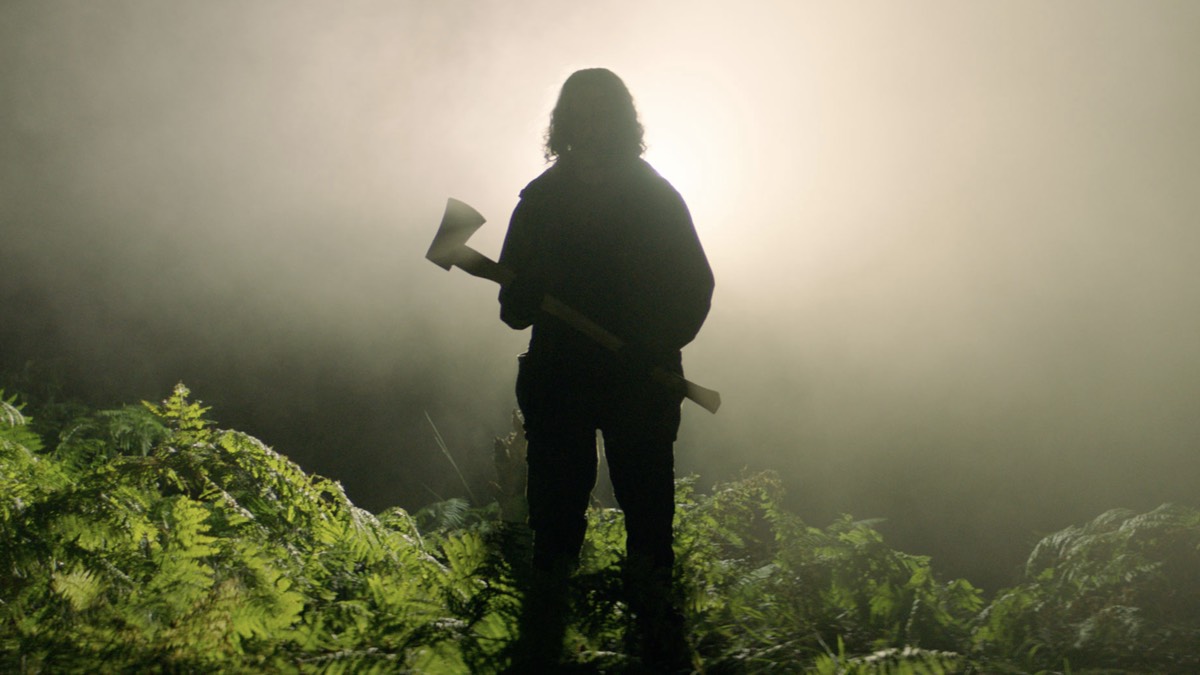
In the Earth (2021)
Director: Ben Wheatley
And so we arrive at the final film of my 2021 #31DaysofHorror, Ben Wheatley’s In the Earth. Wheatley is always interesting, and Kill List is a masterpiece, so I was happy to see him return to folk horror. He does a particular type of British awkwardness like nobody else (see Happy New Year, Colin Burstead), and that tone is present in spades here.
Martin arrives at a woodland camp controlled by the government during a deadly pandemic. He is looking for an ex-colleague, scientist Olivia Wendle, who is doing research deep in the woods. It’s a two-day hike to reach her camp, so he needs the help of park guide Alma, who tells him about the legend of the woodland spirit Parnag Wegg. They are attacked in the night, and helped by Zach, a man who lives in a makeshift camp nearby, but when he claims the trees talk to him, they begin to suspect his help comes at an awful price.
It’s a fascinating, horrible, blackly funny film about Covid, nature, group dynamics, and how humans exist in relation to other forms of life. Olivia and Zach are abusive parental figures, and Martin and Alma are trapped in their co-created psychosis. Zach has a straightforward manner that barely hides his intrinsic brutality, while Olivia’s scientific method quickly devolves into cult-speak and witchcraft. Both want to use Martin’s niceness and open-mindedness to speak to the woods through the pleasingly spooky altar stone, but it’s the pragmatic Alma who is the voice of reason and eventual conduit to the realm beneath their feet.
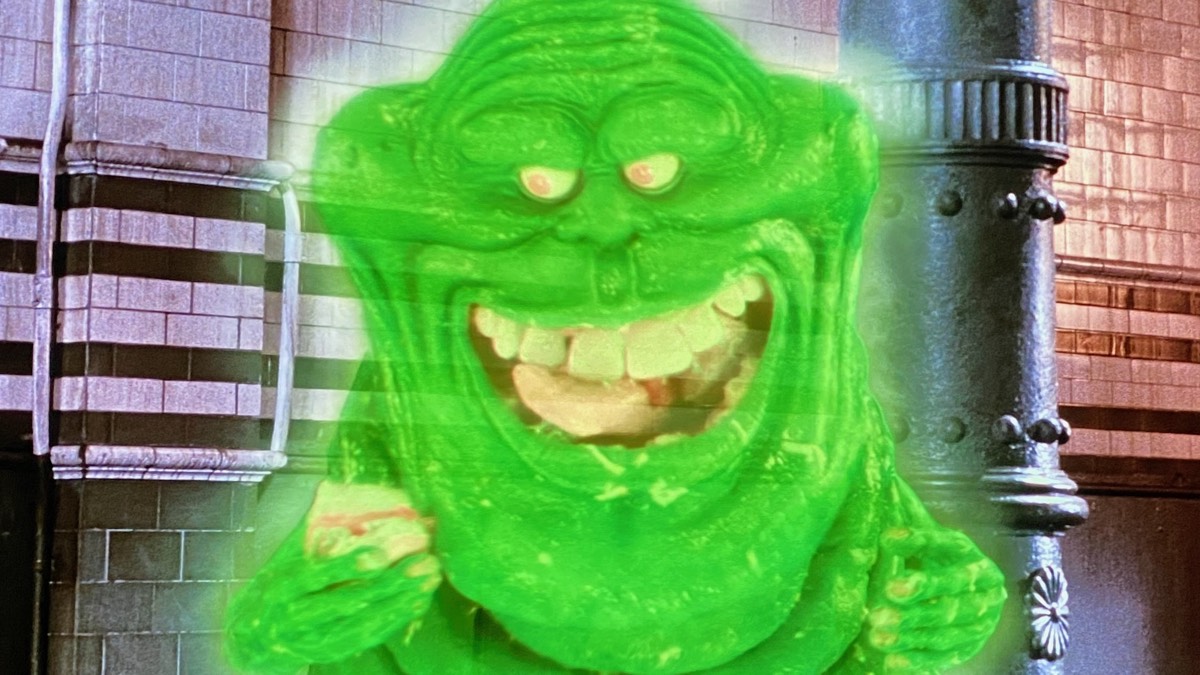
Ghostbusters II (1989)
Director: Ivan Reitman
To finish my parade of eighties sequels, I went with Ghostbusters II, which I can remember seeing in the cinema with friends back in the day. My father took me to see the original Ghostbusters, at Swansea Odeon, when I was eleven years old. I have a wonderful memory of feeling scared by the librarian ghost in the New York Public Library, and then laughing uproariously with my father as they ran outside. I’d never seen him laugh like that before, uninhibited and really enjoying himself. The whole theatre was in pieces. Magical.
Five years after defeating Gozer, Ray, Egon, Winston and Venkman are out of business. Dana works at an art museum and has a baby, Oscar. One morning she runs her pram through a sliver of red slime on the pavement. The pram takes on a life of its own, racing through traffic, and Oscar barely survives. Thinking it was a ghost, Dana asks Egon to investigate, and soon the old team have discovered a river of slime running through abandoned subway tunnels under the city. Meanwhile, Dana’s boss, Janosz, is restoring a painting of Vigo the Carpathian, an evil sorceror, who needs to possess the body of a baby at the stroke of midnight on New Year’s Eve if he is to conquer the world, and because Janosz likes Dana, Oscar becomes the target.
The four ghostbusters don’t fully rekindle the chemistry from the first film, so the first act feels awkward and not very funny. I’m surprised again at how unpleasant Bill Murray could be in the eighties; I have no idea what Dana sees in Peter Venkman. The best bits usually involve the supporting characters, Dana, Louis, Janine, and Janosz, who liven things up with some heart and good comic acting. The special effects still look pretty good, but I wish there were more ghosts, and it was always a losing battle trying to replace Ray Parker Jr’s legendary theme song, so the ghost fight scenes feel flat.

Director: Steve Miner
The #31DaysofHorror train keeps chugging along with my exhausted corpse tied to the front. Friday the 13th Part 2 is many peoples franchise favourite, and I bought it for three quid a couple of years ago, so if not now, when? Unlike Halloween, which has a heroine with a link to the killer, the camp counsellors on Crystal Lake are simply an endless supply of victims to Jason Voorhees. (I know who the killer is in the first one, so don’t Scream me.)
A couple of months after surviving the original film—the murders at Camp Crystal Lake—Alice is killed in her apartment by an unseen assailant. Five years later, a new camp has been created along the lake, and at a training week for counsellors, leader Paul tells the group the story of the slaughter, but assures everyone that Jason is dead. The next night, half the counsellors go to a nearby bar, and the ones staying behind are stalked by Jason, who is living in a self-made shack in the woods. As the night goes on, Jason picks the counsellors off one by one.
I don’t think it was done deliberately, since both films were released the same year, but just as the opening sequence of Halloween II is the final scene of the first film, Alice relives the end of Friday the 13th in dream flashbacks, before having a cat thrown at her, finding a head in her fridge, and having an ice pick pushed into her temple. The characters are all likeable, the acting is naturalistic, and the couples feel plausible, so I found myself upset as they ran afoul of Jason’s various weapons. Usually there are a few characters in these films you can’t wait to see die, but not here. This is a slasher with minimal special effects, without complex kills, and before irony. Surprisingly affecting and effective.
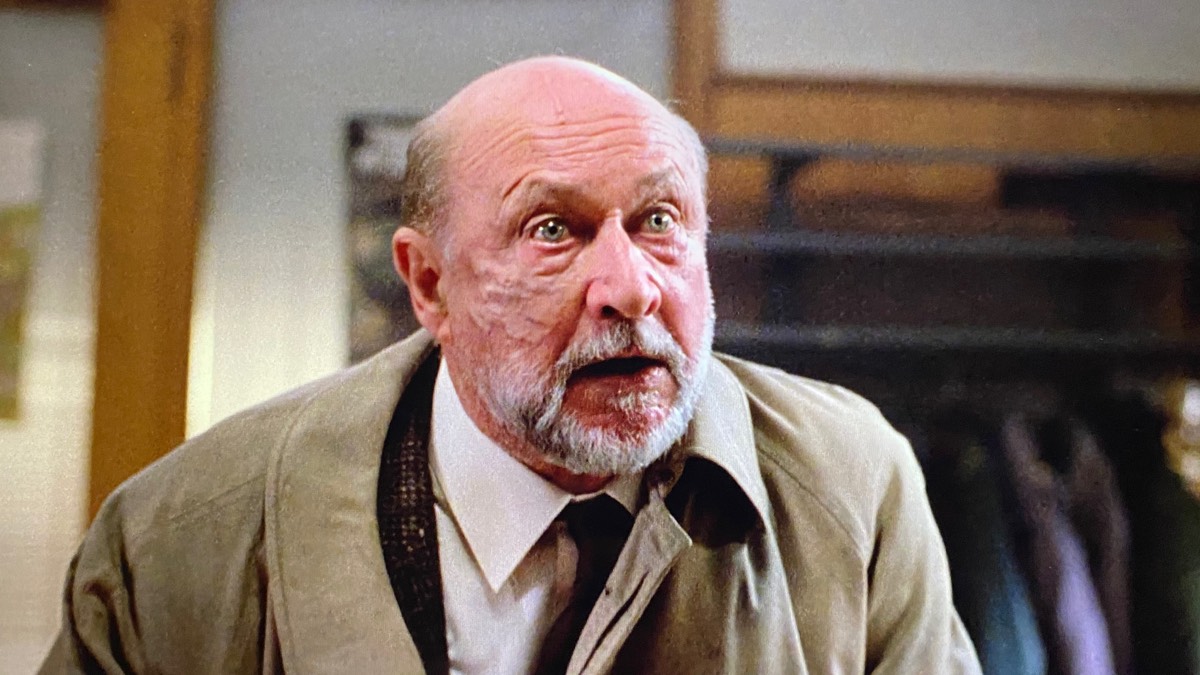
Director: Dwight H. Little
I heard someone on a podcast say Halloween 4: The Return of Michael Myers was their favourite of all the Halloween sequels. I was never a sequels guy growing up, these films were never on television in the UK, so all the Friday the 13ths, Halloweens and Elm Streets passed me by. What better way to approach the end of #31DaysofHorror than seeing what all the fuss was about?
Ten years after the Haddonfield killings, Michael Myers escapes an ambulance taking him to a new sanitarium. His psychiatrist, Dr Loomis, doesn’t know about the move until it’s too late. Loomis returns to Haddonfield to search for Myers. Laurie Strode has died in a car crash and her daughter, Jamie, is fostered by the Carruthers family. Their teenage daughter, Rachel, babysits Jamie on Halloween, but Myers wants to kill Jamie.
After twenty-seven horror films back to back, it was a relief to watch a film with no emotional stakes. The script, acting and direction are all adequate, in a television film sort of way, and Dean Cundey’s trademark wide shots are gone, but it does feel like a Halloween film, with its autumnal colour palette, pumpkins and general mood. It’s a good film to watch in the spooky season. On the downside, Michael Myers has transformed from silent creeping psychopath to a being with superhuman and possibly supernatural strength. There are moments of oddball humour, some fun set pieces, and the twist at the end is almost brilliant, but for me Michael Myers is scariest as a disturbed psychopath, not a demonic force.
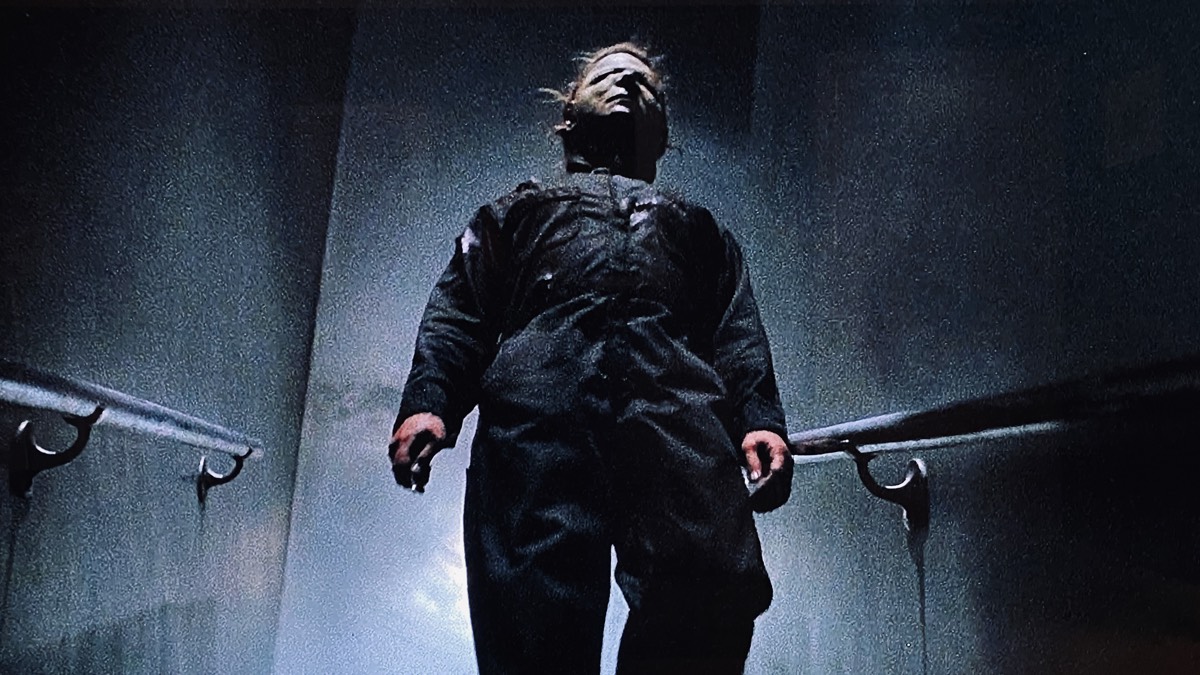
Halloween II (1981)
Director: Rick Rosenthal
The original plan was to watch Halloween Kills in the cinema, but the reviews were so awful I couldn’t bring myself to go. Instead, I went for the original sequel, Halloween II. I was surprised to see Dean Cundey’s name in the opening credits. He was cinematographer for all of John Carpenter’s early classics—Halloween, The Fog, The Thing, Escape from New York—and went on to work on massive blockbusters like Jurassic Park. I knew Halloween II was not a fan favourite, so if the script was bad, at least it would look good.
It starts with the final sequence of the original film, with Dr Loomis shooting his escaped patient, Michael Myers, and saving Laurie Strode. When Myers’ body goes missing, Loomis continues his search on the streets of Haddonfield, while Laurie is taken to hospital and sedated. But Myers wants to kill Laurie specifically because she is his sister, fostered after he killed their parents, and when he hears on the radio where she’s been taken, he stalks the hospital searching for her, killing anyone that crosses his path.
Laurie Strode seems like a less rounded character—she has no kids to look after, we don’t see her going about her day, she’s reduced to a (probably realistic) traumatised victim. The film jumps straight into the chaotic aftermath of a mass killing in a small town, which we find out is still ongoing. It’s also much darker, both literally, because there are no shots in daylight, and in its violence. Myers’s physical strength and penchant for blades and needles leads to several gruesome deaths, and in a grim aside, there’s a short scene where a mother brings her son to the hospital with a razor blade stuck in his mouth, presumably hidden in a treat. This film has a nasty streak.
But what’s wonderful about it, especially after seeing the 2018 ‘sequel’, is how much it feels like the original Halloween. Made only a couple of years later, it has the same characters, actors, and cinematographer, and even if the story is lacking in some respects, it does give a definitive ending to Laurie Strodes’ nightmare. They should have stopped here.
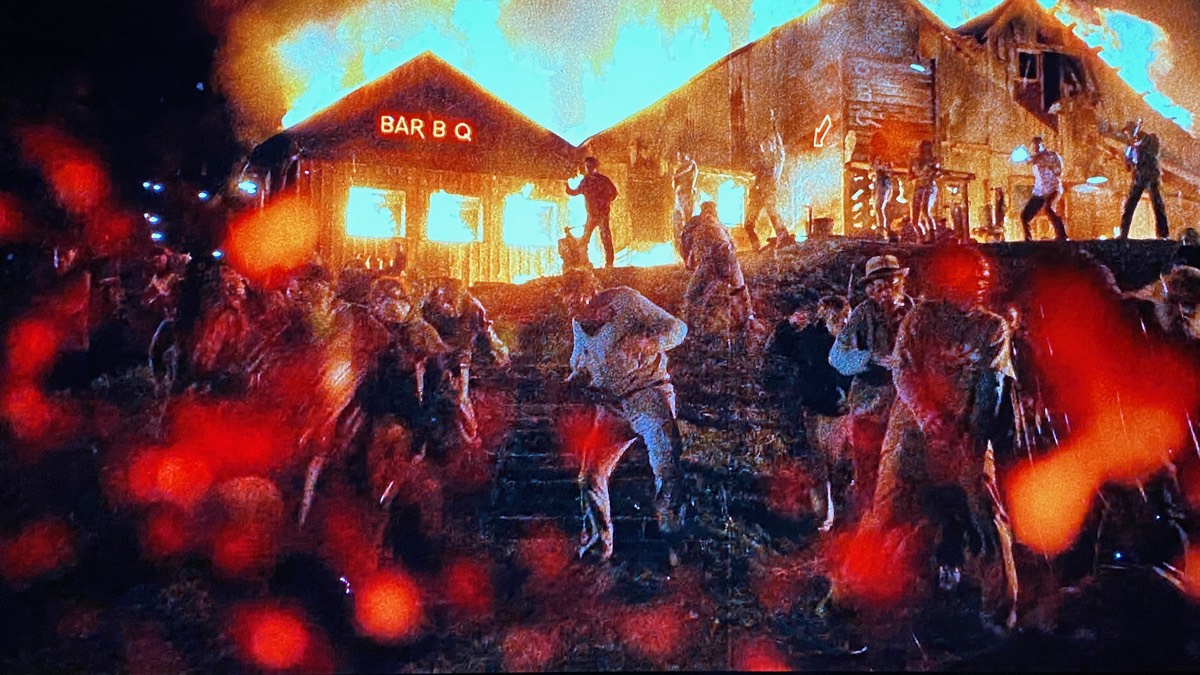
Planet Terror (2007)
Director: Robert Rodriguez
If Killer Klowns is lovingly sewn together by your coulrophilic neighbour (wait, no…), Planet Terror is a grindhouse pastiche ruthlessly tailored by a master craftsman. It’s ridiculous fun, and as much as I am not an admirer of style at the expense of story, this did make me laugh out loud at the sheer excess of it all.
Lieutenant Muldoon tries to buy a consignment of a biochemical weapon, DC2, from an arms trader for his mercenary army, but some people already infected with DC2 escape. Cherry Darling is a stripper who quits her job, runs into her ex-boyfriend El Wray, and after a car crash leaving town, has her leg ripped off by a pack of marauding flesh-eating mutants. Dr Dakota Block is planning to leave her husband for another woman during their joint shift at the local hospital, but just as he finds out, the DC2 infection hits the local population. All of these characters, and more, converge in a relentless circus of cheesy dialogue and amusingly extreme violence.
This film has everything from a rogue scientist who keeps his adversaries testicles bottled to a stripper with a machine gun for a leg. I particularly enjoyed the ‘missing reel’ that skips through a chunk of unnecessary plot to get to the action. Robert Rodriguez and Quentin Tarentino collaborated in the making of this and the Tarentino-directed Death Proof, with both films released as a double feature, Grindhouse. They weren’t a hit in 2007, but I think this is glorious fun.
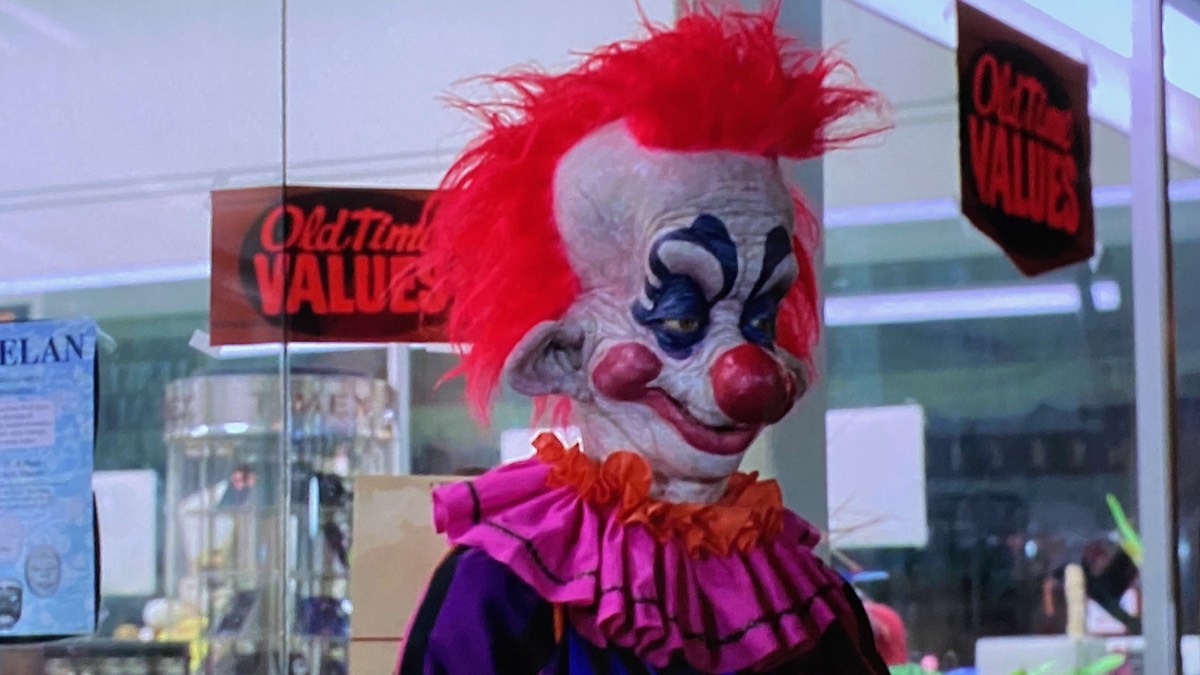
Director: Stephen Chiodo
Clowns on screen have never frightened me, not even Pennywise, although on the page he was a different proposition. Killer Klowns from Outer Space isn’t a film that’s trying to scare you. It’s more of an adult cartoon playing things for grotesque laughs, but it does take the question it asks very seriously: what if alien clowns came to earth to turn people into candyfloss snacks?
Mike and Debbie are making out in the woods near Crescent Cove when they see something fall from the sky. They discover a circus tent spaceship and the bodies of two local people dissolved in a wrapping of candyfloss. The town’s Sheriff doesn’t believe them, so they try to convince his Deputy, Debbie’s ex-boyfriend Dave. Clowns from the spaceship arrive on the streets and start to turn everyone into candyfloss balls, which they collect for food. Mike, Debbie and Dave, along with two friends in an ice cream truck, find the spaceship and face off against the clowns’ giant leader.
But this film is not about plot—it’s about the series of set pieces where clowns approach unsuspecting humans and find amusing ways to dispatch them. The awesome mixture of set design, costumes and puppetry creates a surprisingly real and coherent world that is straight out of a B-movie, but could actually be happening. It’s a one note tune, for sure, and I did get bored in places, but there are also weird wonders here, and I can imagine anyone who saw this too young, perhaps because of a mean older sibling, or lax babysitter, might be scarred for life. It’s not a good film, but it’s also amazing, and I don’t want to think about any of these clowns knocking on my door in the middle of the night.
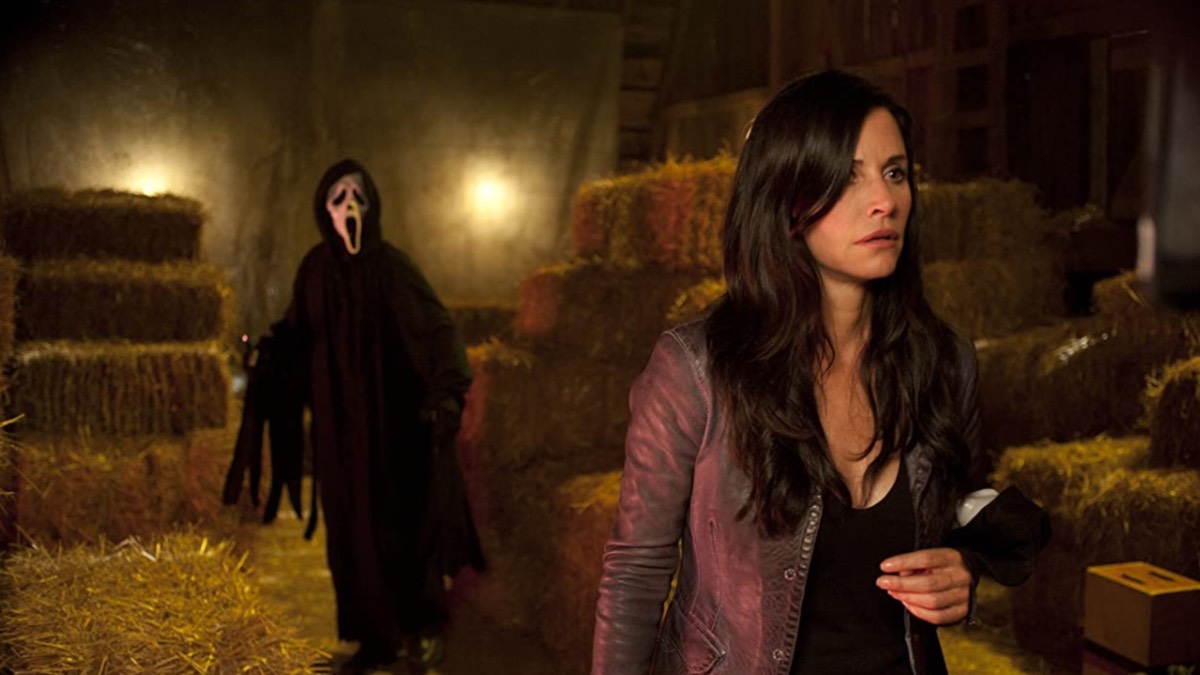
Scream 4 (2011)
Director: Wes Craven
The original Scream changed the course of horror cinema, but I didn’t enjoy Scream 2 or 3 half as much, so when Scream 4 came out to mixed reviews, I skipped it. That was a mistake. Scream 4 is closer to the original, and yes, it’s another complicated, stabby whodunnit, but it embraces teenagers use of social media, and has things to say that are still relevant now.
Sydney returns to Woodsboro on the fifteenth anniversary of the original killings to promote her new book. Dewey is now Sheriff, and is married to ex-journalist Gail, who has writer’s block. Sydney has a niece, Jill, in the High School, which presents us with another set of teens for the Ghostface killer to brutally pick off.
We’ve seen it all before, but that’s the point, and the meta conversations about fourth installments of franchises were predictably fun. A lot of people die, and it could be my age, or because of the way of the world now, but seeing someone stab dozens of people in a small town felt much more disturbing in 2021. I didn’t guess the killer, just like I didn’t in the first film. This one’s motives are unexpectedly chilling. The amusingly-titled fifth installment, Scream, is out in a couple of months. October 2021 is the twenty-fifth anniversary of the first Scream. It’s a terrible shame Wes Craven wasn’t around to direct Scream 5 (a.k.a Scream). Rest in peace, sir.
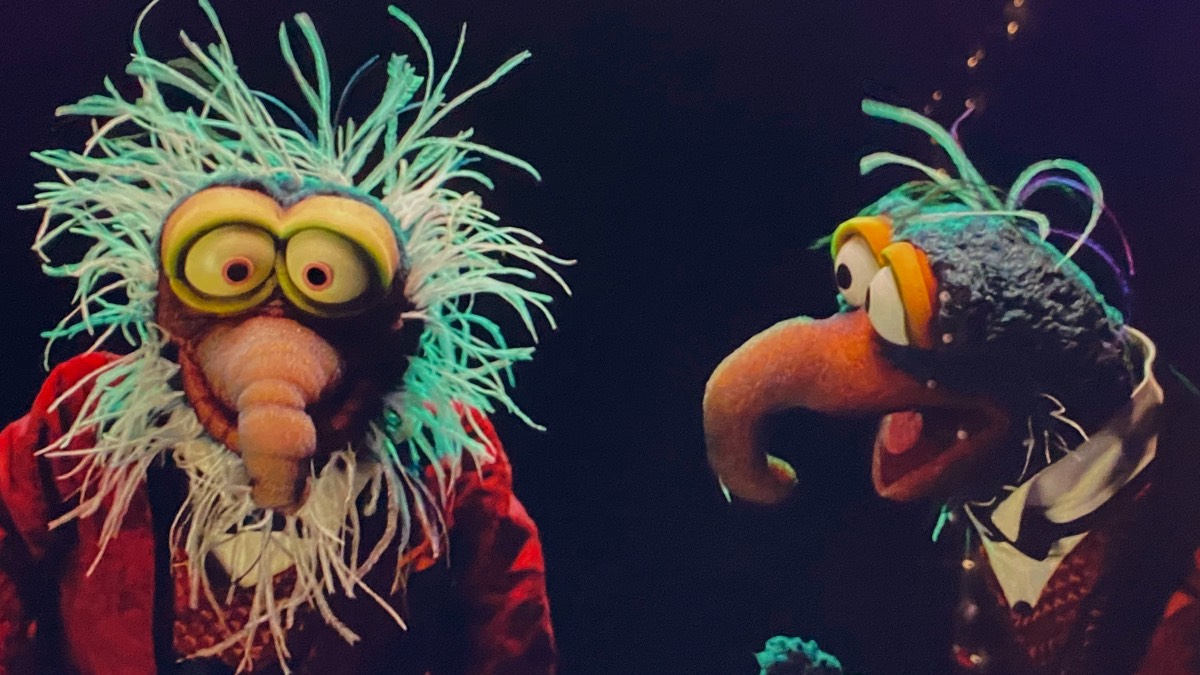
Director: Kirk R. Thatcher
I started this journey with an adapted video game, and nearing the end I find myself watching an adapted amusement park ride—Disneyland’s Haunted Mansion meets the Disney-owned Muppets to create Muppets Haunted Mansion. The first period of The Muppets, 1976—1981, coincided with my pre-teen years, so I remember being allowed to stay up past my bedtime to watch it. Those episodes are on Disney+, and they’re still funny. They feel fresh and on the edge of anarchy, which is astonishing when you think how complicated it must have been to make back in the seventies. This film is a long way from that golden period.
Gonzo decides to miss his friends Halloween party to take up an invitation by The Great MacGuffin, his favourite magician, to stay a night at the most haunted mansion in the world. He takes his friend, Pepe the King Prawn, who thinks he’s going to party filled with celebrities. They arrive to find the house filled with ghosts, and a challenge to face their greatest fear and survive the night. If they don’t succeed, they will be stuck in the house for all eternity.
I watched it with my twelve-year-old daughter who hates anything scary. We both jumped a couple of times, enjoyed the songs, and had fun with it. It’s not a good film, it’s a corporate film, like an amusement park ride in fact, but there are enough little references for horror film fans to keep it interesting, and the nostalgia effect is strong. But Disney Muppets are not Jim Henson’s Muppets, that’s for sure.